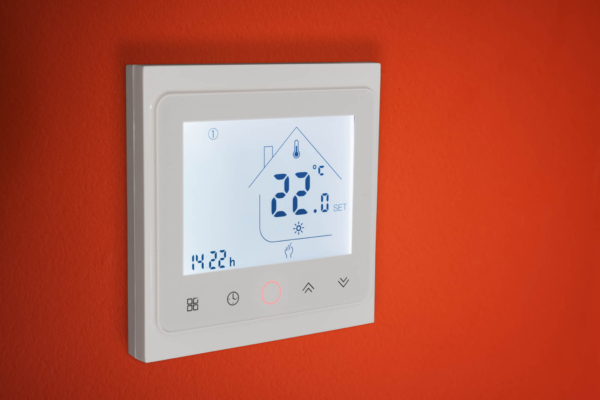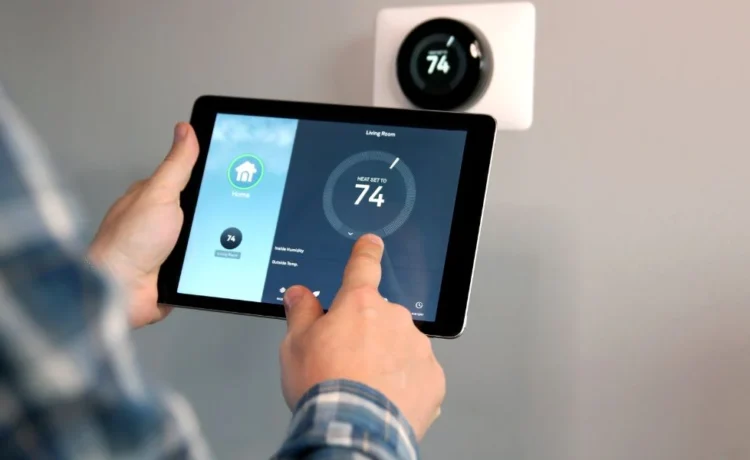Maintaining the perfect indoor environment hinges on precise control systems, and two key players in this process are Room Thermostats and pressure switches. These devices work behind the scenes, ensuring temperature and pressure levels stay within desired ranges, creating comfortable and efficient spaces.
From regulating heating and cooling systems to safeguarding equipment from pressure fluctuations, thermostats and pressure switches are indispensable. They not only enhance energy efficiency but also contribute to the longevity of HVAC systems, making them essential for both residential and commercial settings.
Room Thermostats: Keeping Indoor Temperatures Consistent
Room thermostats regulate indoor temperatures by monitoring current conditions and activating HVAC systems as necessary. They ensure a consistent climate by maintaining a set temperature range, which enhances comfort and energy efficiency.
Modern room thermostats include digital, programmable, and smart models. Digital thermostats allow for precise adjustments, while programmable ones facilitate scheduling for temperature changes throughout the day. Smart thermostats offer advanced features like remote control through mobile devices and learning capabilities that adapt to user preferences.
Integrating room thermostats into HVAC systems reduces energy waste. By preventing unnecessary operation of heating or cooling units, they contribute to lower energy bills and extended equipment lifespan. For example, programmable thermostats can lower heating settings during unoccupied hours, minimizing energy usage.
How Pressure Switches Ensure System Safety and Longevity

Pressure switches play a critical role in protecting HVAC systems from damage. They detect abnormal pressure levels and trigger safety mechanisms to prevent equipment failure. For instance, in high-pressure conditions, pressure switches may shut off compressors to avoid overheating, while in low-pressure scenarios, they can stop the system to protect components like refrigerant lines.
These devices maintain steady system operation by controlling pressure thresholds. If pressure falls outside designated limits, the switch alerts the system, reducing wear on components and extending equipment lifespan. This functionality ensures optimal performance while minimizing maintenance costs.
Modern Pressure Switches feature adjustable settings, allowing integration into various applications. They ensure compatibility with HVAC systems of different sizes and capacities, reducing the risk of malfunction due to mismatched specifications. Their reliability makes them indispensable for maintaining efficiency and safety.
Optimizing Environmental Control with Smart Thermostats
Smart thermostats enhance environmental control by leveraging advanced technology to monitor and adjust indoor temperatures automatically. These devices offer features like real-time climate data analysis, remote access through mobile apps, and AI-based learning to adapt to user preferences. By analyzing usage patterns, smart thermostats optimize HVAC system operation to maintain comfort while reducing energy consumption.
Energy efficiency increases significantly with scheduling capabilities, which automatically adjust temperature settings during unoccupied hours. For example, settings can lower heating or cooling levels at night or during work hours. Smart thermostats also integrate with home automation systems, enabling seamless communication with other devices and improving overall energy management.
Using detailed performance insights, users can monitor energy usage and identify inefficient patterns. Some models provide reports and tips to enhance energy savings further. Additionally, compatibility with both modern and legacy HVAC systems ensures easy integration, whether in residential or commercial setups. By incorporating these innovative technologies, smart thermostats help achieve consistent environmental control while minimizing energy costs.
Troubleshooting Pressure Switch Issues in HVAC Systems
Identifying pressure switch issues early minimizes system downtime and prevents costly damage. HVAC systems rely on these switches to maintain safe pressure levels under varying conditions.
- Failure to Activate: If the pressure switch doesn’t activate, inspect for loose electrical connections or damaged wiring. Ensure voltage supply meets required specifications for proper operation.
- Frequent Cycling: Rapid on-and-off cycling often indicates clogged air filters or restricted airflow. Cleaning or replacing filters restores consistent operation.
- Stuck in Position: A switch stuck open or closed limits system performance. Contamination or incorrect calibration is a common cause. Clean the switch components and check configuration settings.
- Erroneous Readings: Fluctuations in pressure readings may indicate a malfunctioning diaphragm or sensor. Replace defective parts to maintain accuracy.
Regular inspection and maintenance ensure pressure switches function efficiently within HVAC systems. Alongside room thermostats, they optimize environmental control, enhancing system performance and safety.
The Role of Thermostats in Reducing Energy Consumption
Thermostats optimize energy usage by regulating HVAC systems based on specific indoor climate requirements. They minimize excessive heating or cooling by maintaining precise temperature settings. This process ensures the system only operates when necessary, reducing energy waste.
Programmable and smart room thermostats enhance this efficiency further with advanced scheduling and automation. For example, users can set heating or cooling to activate before occupancy or deactivate during unoccupied hours. This feature prevents unnecessary energy use, lowering energy bills without sacrificing comfort.
Smart thermostats integrate technologies like AI and sensors to adapt to user preferences and environmental conditions. They adjust settings in real-time and provide insights into energy usage patterns. These insights help users identify inefficiencies and make proactive changes to reduce consumption.
By maintaining consistent temperatures, preventing system overuse, and offering remote management capabilities, room thermostats play a significant role in decreasing energy demand.
Choosing the Right Pressure Switch for Industrial Applications
Selecting a pressure switch for industrial use involves evaluating several factors to match the device to system requirements. Accuracy, pressure range, and compatibility with the application are primary considerations. Pressure switches must function reliably under specific operating conditions to ensure safety and efficiency.
- Determine Pressure Range: Choose a switch with a pressure range suited to the application, such as low-pressure models for sensitive systems or high-pressure models for heavy-duty operations.
- Evaluate Materials: Select materials like stainless steel for durability in corrosive or extreme environments, ensuring long-term reliability.
- Adjustability Options: Opt for switches with adjustable settings for greater flexibility across various industrial applications.
- Compatibility with Systems: Ensure the switch integrates seamlessly with associated systems, including HVAC setups, to maintain operational consistency.
- Safety Certifications: Verify compliance with industry standards for safety, such as UL or CSA certifications, to minimize risks.
Pressure switches protect industrial systems by preventing over-pressurization, reducing equipment failure, and sustaining optimal performance in demanding environments.
Advances in Wireless Thermostat Technology for 2025
Wireless thermostat technology is transforming environmental control by offering enhanced connectivity and adaptability. These advanced room thermostats feature improved wireless protocols, such as Zigbee, Z-Wave, and Wi-Fi 6, ensuring faster communication and greater range. With reduced latency, these thermostats deliver precise adjustments for optimal indoor climate regulation.
Energy optimization is a major benefit of these wireless innovations. Leveraging sensors and cloud-based AI, wireless thermostats analyze user behavior and environmental conditions to automatically adjust settings, further reducing energy consumption. For example, geofencing features detect user locations and activate heating or cooling systems only when needed.
Enhanced compatibility makes integrating wireless thermostats with existing HVAC systems easier. Manufacturers are designing these devices with support for both modern and legacy systems, eliminating the need for extensive upgrades. This flexibility ensures efficient operation with minimal disruption.
Mobile connectivity has been significantly expanded. Wireless thermostats now offer real-time monitoring and control through dedicated mobile apps. Users can adjust temperature settings, schedule programs, and receive maintenance alerts from any location.
Security is another focal point in wireless thermostat development for 2025. Advanced encryption protocols protect data and prevent unauthorized access, ensuring safe and reliable operation of environmental control systems. These advancements make wireless room thermostats a valuable addition to modern HVAC technologies, enhancing user experience and system efficiency.
Integrating Thermostats and Switches for Maximum Efficiency
Room thermostats and pressure switches play a pivotal role in achieving precise environmental control, ensuring comfort, safety, and energy efficiency. By leveraging advanced technologies like smart thermostats and modern pressure switches, users can optimize HVAC system performance while reducing energy consumption and maintenance costs.
These components not only enhance climate regulation but also protect equipment from damage, prolonging its lifespan. With features like automation, remote access, and real-time monitoring, they provide a seamless, efficient solution for both residential and industrial applications. Adopting these innovations enables users to maintain ideal indoor conditions while minimizing environmental impact and operational expenses.







